|
A number of American aircraft designs served with distinction in combat, cargo, utility
or training roles during WWII but are almost forgotten or overlooked today. In some cases,
this is because the planes saw the bulk of their service with Allied air forces. In others
cases, few examples survived long after the war. Want to know more about WWII color photographs?
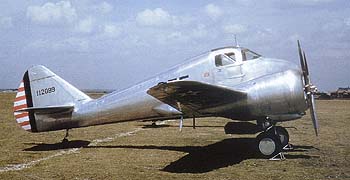 |
| The Curtiss AT-9 Fledgling (better known at the "Jeep") was designed as a
"hot" multi-engine trainer to prepare pilots for the P-38, B-26 and A-26.
Designed to be a handful, it was, both on the ground and in the air in single-engine
operation. One pilot once quipped that it "took off at 120 mph, flew at 120 mph and
landed at 120 mph!" One is on display at the USAF museum. Image
Source: Fred E. Bamberger, Jr. from WWII War Eagles in Original Color by Jeff Ethell and Warren M. Bodie, used with permission. |
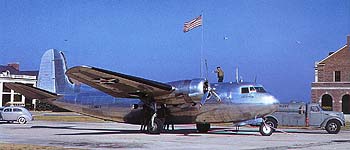 |
| Once Douglas entered the commercial transport business, it had few misfires. However,
only a dozen DC-5 airliners and Navy and Marine R3D transports were built, due to limited
performance and the availability of more capable designs. Despite this, the R3Ds continued
to serve until after the war. Image Source: Edward W. Simpson,
Jr. from WWII War Eagles in Original Color by Jeff
Ethell and Warren M. Bodie, used with permission. |
 |
| Designed as both a low-level attack and medium-altitude precision bomber, the Martin
XA-22 (above) lost out to what became the Douglas A-20. France and Great Britain, however,
purchased the design, calling it the Maryland. With a maximum speed of over 300 mph and
service ceiling over 30,000 feet, Marylands were also used for photographic
reconnaissance. In 1940, the British asked for an improved version, called the Baltimore
(below). Powered by two 1,600 hp Wright R-2600 engines, it had a top speed of 308 mph and
bomb load of 2,000 pounds. Production totaled 1,575 Baltimores, know to the USAAF as
A-30s. Image Sources: (left) Glenn L. Martin archives; (below)
James M. Stitt, Jr. from WWII War Eagles in Original Color by Jeff Ethell and Warren M. Bodie, used with permission. |
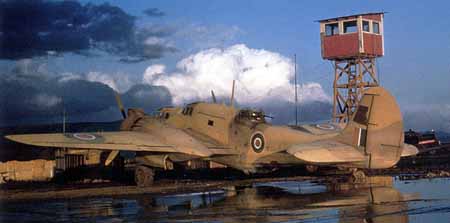 |
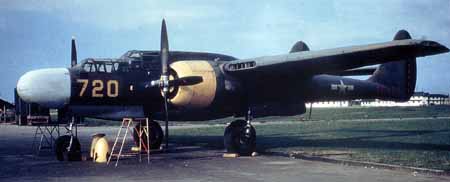 |
| America's first purpose-built night fighter, the Northrop P-61 Black Widow did not
enter combat until mid-1944, but proved itself effective as a nocturnal hunter as well as
a ground attack aircraft. This very early P-61A is not painted the gloss black of most
later Black Widows, and the covering for the nose-mounted SCR-720 radar was often left
unpainted. About 691 P-61A, B & Cs were built but only a couple survive today. Image Source: Ole C. Griffith from WWII War Eagles in Original Color
by Jeff Ethell and Warren M. Bodie, used with permission. |
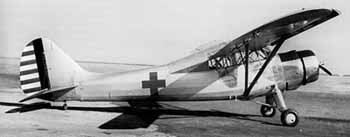 |
| Clearly inspired by Germany's Fieseler Fi 156 Storch, the STOL Vultee O-49/L-1
Vigilant was ordered in Sept. 1939 and the prototype first flew on 15 July, 1940. Powered
by a 295hp Lycoming R-680-9 nine-cylinder radial engine, the Vigilant could operate into
and out of a 200 foot area with ease. About 324 L-1s were built, many being ambulance
versions, and they saw service in both Europe and the Pacific during the war. The aircraft
pictured is an O-49B, at Moffett Field, Calif. on 6 Dec. 1941. The O for observation
designation was changed to L for liaison in April 1942. I watched a low-speed
"race" between a Storch and an L-1 a few years ago at an air show, and the L-1
won. With both able to fly at 35mph or less, it was probably decided more by the L-1
pilot's experience and comfort level. Only one or two remain flyable today, along with a
couple in museums.
Image Source: Peter M. Bowers collection, published in
General Dynamics Aircraft and their Predecessors by John Wegg. |
|